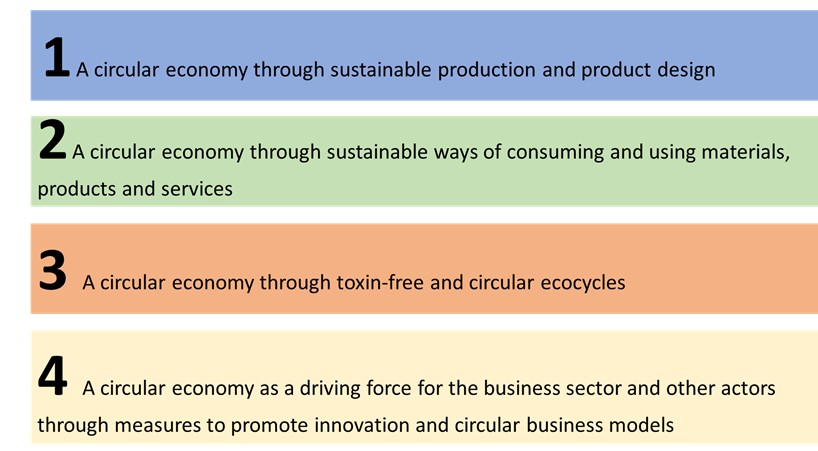Sweden transitioning to a circular economy
Early in July this year, the Swedish government presented the national strategy for transitioning to a circular economy. The strategy sets the direction and long-term goals to ensure a sustainable transition and reduce the environmental and climate impact. This strategy will contribute to reach the final goal of Sweden: becoming the world’s first fossil-free nation in the world.
The use of the resources in a more efficient way is crucial to achieve the goals set in the 2030 Agenda. In line with the Circular Economy Action Plan presented by the European Commission recently, Sweden has presented its national strategy with the vision of a society where the resources are used effectively in a toxic-free circular flow and substitute raw materials.
The Swedish strategy has focus areas (Figure 1) which in turn follow some guidelines to reach the final aim. It is expected that products will be designed to last longer; the use of toxin-free recycled materials in new products will be promoted; consumers will have access to more information which will allow them to sustainable and more circular choices in their everyday lives; strengthening the innovation and business climate so that more circular companies can grow; setting requirement for toxic-free recycled and new materials; development of policies that will facilitate supply and demand of circular products and services, re-used and recycled materials; facilitate to the business operators and individuals to share, repair and re-use products; encourage the use of public procurement for increasing resource efficiency, recycling and circular business model.
It is also important to promote the development of Sweden’s bioeconomy to ensure that bio-based materials, renewable and sustainably produced raw materials can replace fossil-based materials in the production process. Last but not least, it is necessary to promote research, innovation and technological development in the areas of recycling, digitalization and traceability.

Figure: The four focus areas set in the Swedish national Circular Economy Strategy.
The strategy also highlights the need of prioritizing plastic, textile, renewable and bio-based materials, food and construction and demolition waste, as well as critical minerals and metals in the transition to a circular bio-based economy.
The role politicians, business sector, public sector, academia, and private individuals play in the transition to a circular economy is crucial to succeed in reaching the goal. Therefore, all the actors must participate and collaborate to move in the same direction.
Read more:


